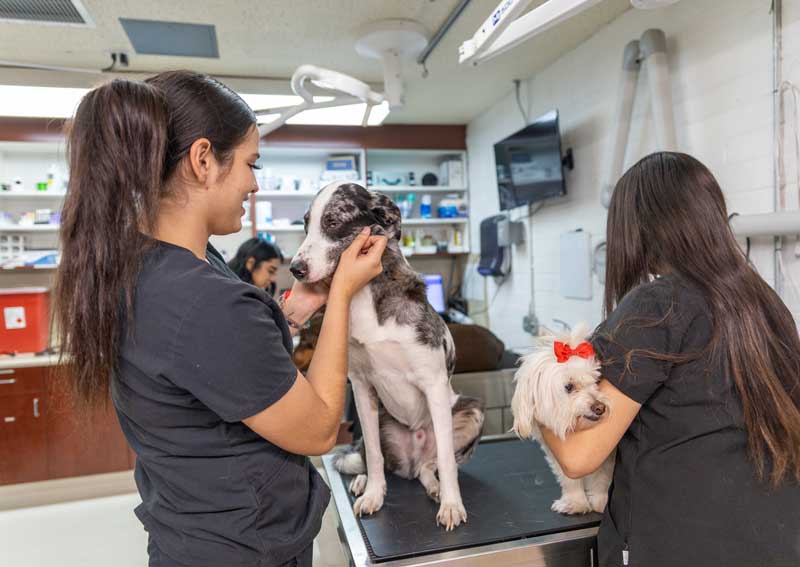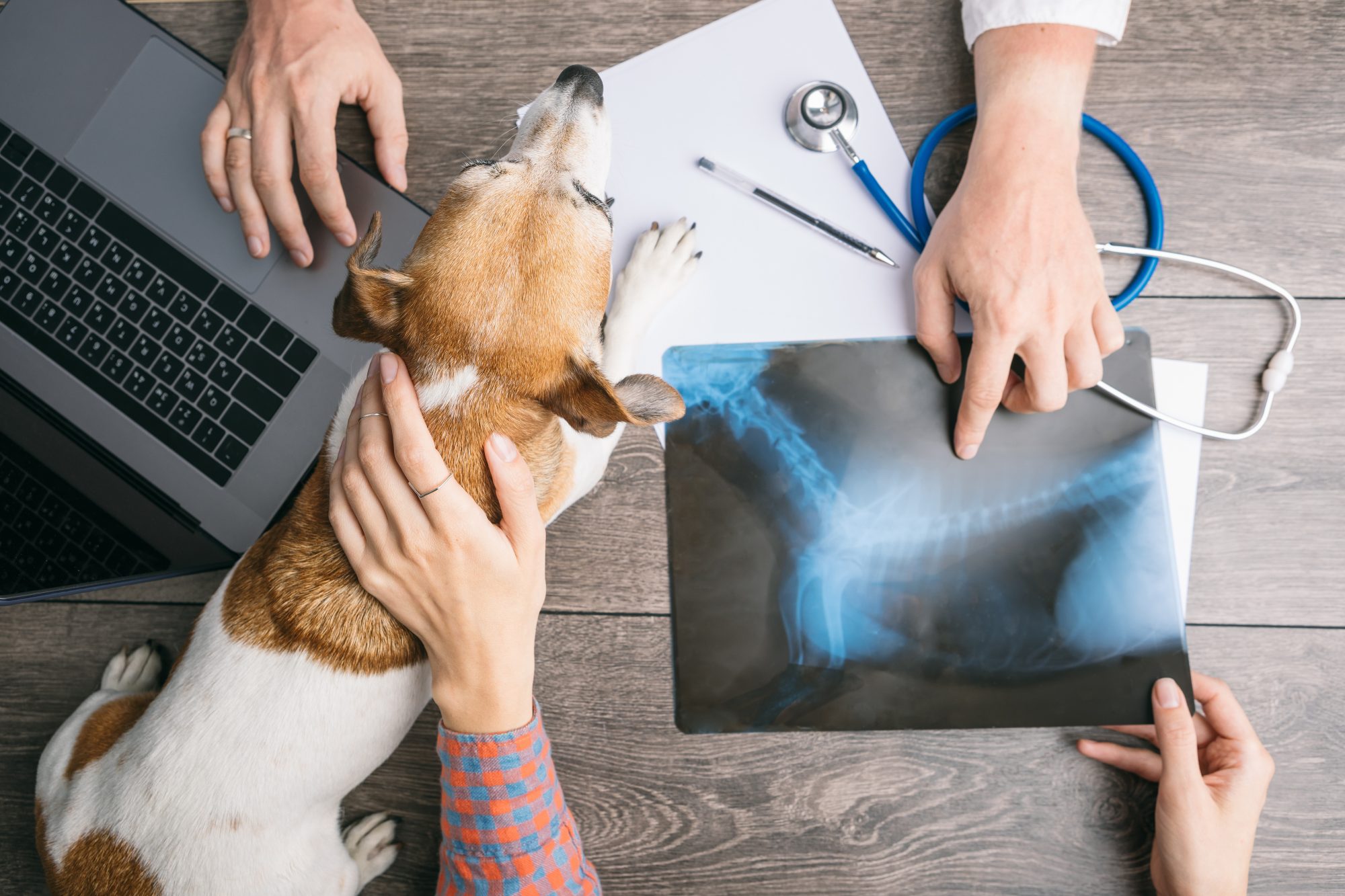Critical Scenarios Only an emergency vet bellingham Can Handle Effectively
Critical Scenarios Only an emergency vet bellingham Can Handle Effectively
Blog Article
Everything About Vet Surgery: Comprehending the Significance of Specialist Care for Your Pet dogs
Vet surgery is an important part of family pet health care. It incorporates various treatments, from regular optional surgical treatments to immediate treatments. Recognizing the intricacies of these surgical procedures can assist pet proprietors make educated decisions. The prep work, implementation, and healing phases are crucial for making certain the health of animals. With appropriate knowledge, proprietors can navigate the complexities of veterinary treatment. What factors should be considered prior to a pet undergoes surgical procedure?
Sorts Of Veterinarian Surgeries
When an animal requires medical treatment, recognizing the various kinds of vet surgeries can aid animal owners make educated decisions. Vet surgical treatments can be broadly categorized right into 3 primary kinds: elective, immediate, and emergency situation surgeries. Elective surgical procedures, such as spaying or neutering, are intended treatments that are not immediately life-threatening. Urgent surgeries, like those for international body removal, have to be carried out quickly yet are not life-threatening in the moment. Emergency situation surgeries, such as those dealing with serious trauma or inner blood loss, are vital and need immediate attention.Additionally, surgical procedures can vary in intricacy, varying from minimally invasive laparoscopic treatments to more considerable open surgeries. Each sort of surgical treatment brings its very own risks and healing processes. Understanding these classifications permits family pet owners to participate in purposeful discussions with veterinarians, leading to better end results for their precious family pets.
Planning for Your Pet's Surgery
Planning for an animal's surgical procedure involves a detailed list to guarantee all fundamentals are covered. Efficient communication with the veterinarian is essential for understanding the treatment and any kind of required pre-operative actions - 24 hour vet bellingham. Additionally, having clear post-operative care directions will certainly aid owners give the most effective assistance for their recouping pet dogs
Pre-Surgery List Fundamentals
Assuring a smooth medical experience for a pet dog needs cautious preparation and interest to detail. A pre-surgery checklist is vital for pet dog owners to adhere to. First, validating the arranged surgical treatment day and time is vital. Proprietors must likewise confirm that their pet dog has actually not eaten according to the veterinarian's guidelines, normally for 8-12 hours prior to surgical procedure. Collecting needed clinical records, including inoculation background, is essential for the vet's review. It is likewise recommended to prepare a comfy room at home for the pet dog's healing after surgical procedure. Lastly, owners should have a plan for transport to and from the veterinary clinic, seeing to it that the pet dog is safe and secure and comfy throughout the trip. Following these steps can considerably boost the surgical experience.
Interacting With Your Vet

Effective interaction with the veterinarian is crucial for a successful surgical experience for animals. Proprietors need to be prepared to review their pet dog's medical history, including any kind of pre-existing conditions, drugs, and allergic reactions. This information aids the veterinarian assess threats and tailor the medical plan accordingly. In addition, pet owners ought to ask inquiries relating to the procedure, anesthetic, and expected results to ensure they fully recognize the process. Clearing up any kind of uncertainties can ease stress and anxiety for both the family pet and the proprietor. It is likewise vital to connect any behavior adjustments or problems observed in the animal leading up to the surgery. Inevitably, clear dialogue cultivates trust fund and partnership, making sure that family pets get the ideal feasible treatment during their surgical trip.
Post-Operative Care Instructions
After going over the procedure with the vet, pet dog owners should focus on post-operative treatment instructions to help with a smooth recuperation for their animals. These directions typically include monitoring the medical website for indications of infection, such as redness or discharge. Pet dogs might need to be kept one's cool and constrained to stop extreme movement that could interrupt healing. Pain administration is important, so owners should follow the vet's assistance on providing medications. Additionally, dietary limitations may be suggested to avoid gastrointestinal trouble. Normal follow-up visits are very important to assure proper recovery and resolve any type of problems. By adhering to these post-operative care directions, animal owners can greatly add to their animal's recovery and total health.
The Surgery Explained
The surgery for pet dogs encompasses important steps that ensure their security and recuperation. Pre-surgery preparations are necessary for minimizing threats, while post-operative care guidelines play an essential role in promoting recovery. Comprehending these components helps family pet owners browse the surgical experience better.
Pre-Surgery Preparations
Before a pet dog goes through surgery, numerous vital prep work have to occur to guarantee a risk-free and successful treatment. Initially, a thorough vet assessment is important to assess the animal's total wellness and identify any potential risks. This may include blood examinations, imaging, or various other diagnostics. The veterinarian will likewise discuss anesthesia options customized to the pet's details requirements. In addition, pet dog proprietors are generally instructed to keep food and water for a defined time prior to surgery to minimize the danger of problems during anesthetic. It is essential for owners to offer a full medical background, including any medicines or allergic reactions, guaranteeing the medical team has all required information. Correct communication and adherence to pre-surgery standards can substantially improve the end result of the procedure.
Post-Operative Treatment Standards
Correct post-operative care is necessary for making certain a pet dog's recovery adhering to surgical procedure. After the procedure, animals ought to be checked closely for any indicators of difficulties, such as extreme bleeding, swelling, or uncommon actions. It is necessary to follow the veterinarian's guidelines pertaining to medications, consisting of painkiller and anti-biotics. Animals ought to be kept in a silent, comfortable atmosphere to decrease tension and promote recovery. Restricting task is important; short, leashed walks may be essential, yet jumping or running should be stayed clear of. Routine follow-up consultations should be arranged to assess the recovery procedure. Furthermore, the surgical website must be maintained tidy and completely dry, with any type of indicators of infection reported to a veterinarian promptly. Sticking to these standards boosts recovery end results.
Anesthetic and Discomfort Management
Effective anesthesia and pain monitoring are essential elements of veterinary surgical treatment, making certain that animals remain comfortable and safe throughout the procedure. Vets examine each pet dog's individual demands, taking into account aspects such as age, weight, wellness condition, and the kind of surgical treatment being performed.Anesthesia methods typically consist of a mix of pre-anesthetic medicines, induction agents, and inhalant anesthetics, enabling for accurate control over the animal's level of awareness. Monitoring throughout surgical procedure is essential; veterinarians continuously observe essential indicators to deal with any type of potential complications promptly.Pain management techniques might involve opioids, non-steroidal anti-inflammatory medicines (NSAIDs), and anesthetics, customized to the family pet's particular scenario. This complex technique assists minimize pain and promotes a smoother medical experience. By focusing on efficient anesthesia and pain management, vet professionals improve the general well-being of pets going through surgeries, guaranteeing they get the highest standard of care.
Post-Operative Care and Recovery
Adhering to surgical treatment, the emphasis shifts to post-operative treatment and healing, which is crucial for making sure a pet dog's safe go back to normal tasks. During this duration, family pets need a silent, comfortable environment to help healing. Proprietors need to closely check their animals for any type of signs of pain or unusual behavior.Veterinary guidelines frequently include details directions associated with medicine management, wound treatment, and nutritional modifications. It is important to follow these referrals to lessen complications and advertise healing. Family pets may require to be restricted from strenuous tasks, such as running or jumping, during their recovery period (tplo surgery).Regular follow-up consultations with the vet enable monitoring of the family pet's development and prompt adjustments to the care plan. Supplying emotional support and companionship can likewise enhance a family pet's healing experience, assisting to minimize anxiety and stress and anxiety. Generally, diligent post-operative treatment plays a significant role in achieving a successful healing
Identifying Issues After Surgical Procedure
Just how can animal proprietors recognize problems after surgical treatment? Recognition of particular indications is crucial for making sure the well-being of pet dogs throughout recovery. Common indicators include extreme swelling, redness, or discharge at the medical website, which might represent infection. In addition, consistent pain, indicated by whining or hesitation to relocate, ought to motivate immediate attention. Changes in appetite or water consumption can additionally show complications; a reduction in these actions might indicate pain or distress.Moreover, animal proprietors need to monitor their pet dogs for any type of uncommon habits, such as lethargy or difficulty breathing, as these can be indications of severe issues. Throwing up or looseness of the bowels following surgical treatment might require immediate vet analysis. Recognizing these problems early can significantly impact a pet's recovery process, highlighting the relevance of alertness and prompt interaction with a vet for any kind of worrying signs and symptoms.
The Duty of Veterinary Specialists in Surgical Treatment
Veterinary specialists play an essential function in making certain the safety and security and success of operations for pets, specifically following surgical treatment when keeping an eye on and treatment are paramount. These specialists include veterinarians, vet specialists, and assistance staff, all of whom contribute specialized abilities to the surgical process.Before surgical treatment, vets carry out complete examinations to examine the family pet's wellness, making sure that any type of underlying problems are managed. During the procedure, the medical group gives anesthetic, maintains clean and sterile atmospheres, and keeps track of essential signs, all important for lessening risks.Post-operative treatment is equally considerable; vet experts observe for complications, take care of pain, and guide owners on recovery methods. Their proficiency allows them to identify early indicators of distress or infection, guaranteeing timely treatment. Inevitably, the collaborative efforts of vet specialists in medical treatment foster a secure environment, advertising the wellness of pets throughout the medical journey.

Regularly Asked Concerns
Exactly how Do I Choose the Right Vet Doctor for My Family pet?
Choosing the right veterinary surgeon includes researching credentials, checking out evaluations, and examining the facility's environment. It is important to review the cosmetic surgeon's experience with specific procedures and their interaction style when deciding.
What Are Usual Misconceptions About Veterinarian Surgeries?
Typical mistaken beliefs about veterinarian surgical procedures consist of ideas that they are constantly risky, unneeded, or for emergency situations. Lots of animal owners undervalue the advantages of preventive treatments and the skill entailed in vet surgical care.
Just How Much Will My Animal's Surgery Expense?
The cost of a family pet's surgery can vary substantially based on variables such as the kind of procedure, the get more info vet's experience, and geographical place (veterinary cardiologist near me). Generally, costs range from a few hundred to several thousand dollars

Can My Animal Eat Prior To Surgery?
Before surgical treatment, it is usually advised that pets avoid consuming for a particular duration. This fasting helps lower the risk of difficulties during anesthesia. Owners should consult their veterinarian for accurate instructions tailored to their pet dog's demands.
What happens if My Pet Has Pre-Existing Health And Wellness Issues?
When a family pet has pre-existing wellness conditions, it's vital for the veterinarian to assess these elements before surgical treatment. This evaluation assurances proper precautions are taken, lessening dangers and optimizing the family pet's general safety during the procedure.
Report this page